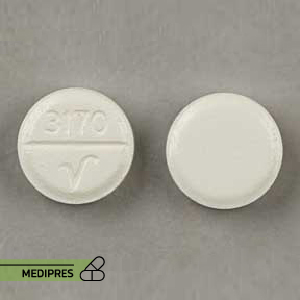
Furosemide (Oral)
23 June, 2023
Ganciclovir
23 June, 2023FusePaq Synapryn
Category: F
Description
Generic name:
synaprynine
Drug class:
Anticonvulsant; GABA analog
Dosage form:
- Film-coated tablets: 50 mg, 100 mg
- Oral solution: 10 mg/mL
- Intravenous infusion: 10 mg/mL
Route of administration:
Oral, intravenous
Dose:
- Initial: 50 mg once daily, may titrate by 50 mg weekly
- Maintenance: 200–400 mg daily in 2–3 divided doses
- Maximum: up to 600 mg/day in refractory cases
- Dose adjustment required in renal and hepatic impairment
- Varies by indication; consult label
Mechanism of action:
Synaprynine binds to the α2δ subunit of voltage-gated calcium channels, reducing excitatory neurotransmitter release, enhances GABAergic inhibition and inhibits glutamate-mediated neurotoxicity.
Drug usage cases:
- Partial-onset seizures (adjunctive therapy)
- Generalized tonic-clonic seizures
- Diabetic neuropathy
- Postherpetic neuralgia
- Off-label: bipolar disorder maintenance
- Off-label: migraine prophylaxis
- Off-label: generalized anxiety disorder
- Off-label: fibromyalgia
Drug contraindications:
- Hypersensitivity to synaprynine or any excipient
- Severe hepatic impairment
- History of suicidal ideation or behavior
- Concurrent use with certain CNS depressants (unless monitored)
Side effects:
- Dizziness, somnolence, ataxia
- Fatigue, headache
- Nausea, vomiting, diarrhea
- Weight gain, peripheral edema
- Thrombocytopenia, leukopenia
- Mood changes, depression, suicidal ideation
- Stevens-Johnson syndrome (rare)
- Hepatic dysfunction (elevated LFTs)
Warnings:
- Increased risk of suicidal ideation and behavior; monitor mood
- Abrupt discontinuation may precipitate withdrawal seizures; taper gradually
- CNS depression: caution with other sedatives, alcohol
- Impairment of driving and machinery operation
- Monitor renal and hepatic function periodically
- Caution in elderly: increased sensitivity to CNS effects
Use during pregnancy or breastfeeding:
Use during pregnancy only if the potential benefit justifies the potential risk to the fetus (Category C). Animal studies have shown embryotoxicity at high doses. Monitor neonates for withdrawal symptoms and respiratory depression. Synaprynine is excreted in human milk; breastfeeding is not recommended. If use is unavoidable, monitor infant for sedation and feeding difficulties.



